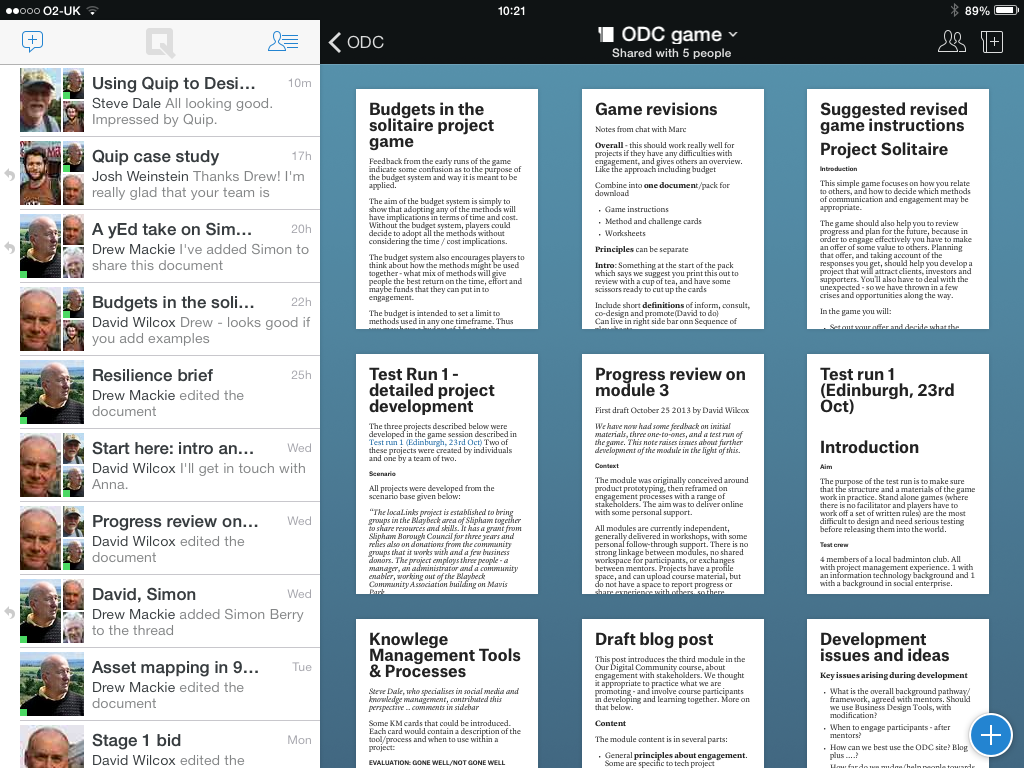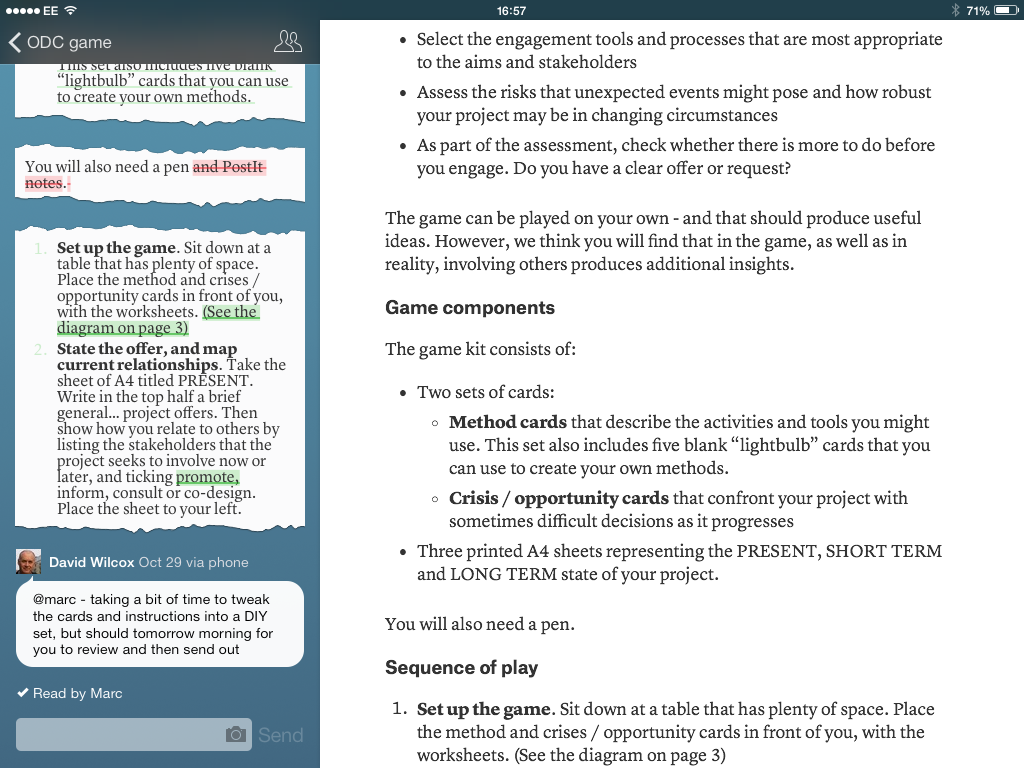Using Quip to Design a Game
Drew Mackie, David Wilcox and Steve Dale run their own firms but also collaborate on training, knowledge management, community engagement, game design and asset mapping projects. Drew is in Edinburgh, Scotland, David in London and Steve in Essex and so we are separated by hundreds of miles. Our client Marc De'ath is Creative Director at the Creative Coop based in Essex - but hadn't met Drew or Steve. The Coop have been running a learning programme to support communities to develop Digital Assets and required a game to simulate the projects that participants are running in real life.
Two things happened two weeks ago. The Creative Coop commissioned a game to support an online training course — and we came across Quip, a collaborative word processor for the iPhone, iPad, Mac, PC and Android.
The client wanted the game very quickly but we needed to involve three contributors in widely separated parts of the UK and also to have the game in a state where basic mechanisms could be tested within a week. We decided to use Quip in the hope that it would accelerate the design process.

A word about Quip: The screen shows the document you are editing, together with a sidebar that indicates the changes made in the collaborative process. It also shows whether your collaborators have read the latest version. It's a bit like track changes in other word processors, but it keeps the mess off the document screen. Notes can be added to this sidebar which provides a continuing conversation about the developing document. The word processor itself provides heading styles, bullets and numbering and can include photos and tables. When one collaborator is editing a paragraph, others are blocked from that section so that you don't have the annoying incompatibilities that can occur in Evernote or the new version of Pages.
It's a simple and elegant way of generating text, but how did it work as a collaborative tool?
The various collaborators had used different methods before — Google Docs, Evernote, and track changes in Word, Pages and Nisus Writer — so there was a little reluctance to try something new on such a tight timescale. Drew prepared the basic structure of the first document and the others added content, comments and corrections. The whole thing was amazingly easy. During the two weeks we generated 16 collaborative documents and during the last week of the process, we involved the client as well. After a week of design, we play tested the game and reported on that event. The game instructions and the report of the gameplay were done in Quip. The final instructions and other game components have just been published online in PDF for use by course members.

The magic of Quip can't be appreciated just by looking at its component parts. There are more powerful word processors for the various platforms but it's the way that Quip puts it all together that makes it sing. There is no doubt that we would not have got through the collaborative process so easily without it.
Quip is a relatively new product (it only launched three months ago), so there's a number of features that the team would be excited to see them add, but Quip is already one of the most useful apps on the iPad. After only a fortnight of use, we're not sure what we'd do without it.
If you are interested in learning more about the game or our experience using Quip, send me an email at drewmackie@mac.com.
